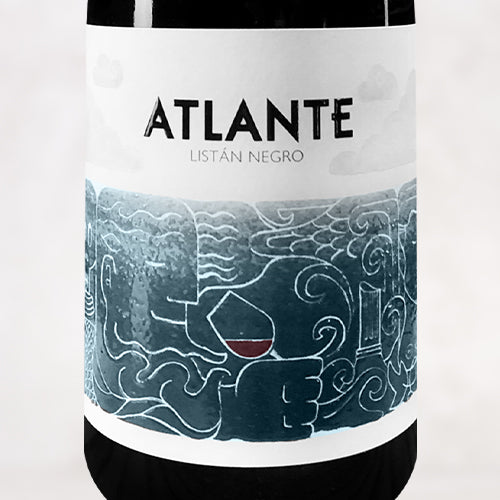Here we go again: Our love affair with island wines continues today with a tiny, brand-new-to-the-U.S. estate that we’re going a bit gaga over. We’ve highlighted the intensely mineral, uniquely delicious wines from the Canary Islands before, but today’s discovery from Jesús González de Chávez’s decade-old winery, Atlante, is a true revelation. Produced from 150-year-old Listán Negro vines that are growing about 1,500 feet directly above the Atlantic, this complex, fiery red weaves together silky red fruit and earthy, volcanic minerals in a seamless, masterful expression of terroir. It’s also wonderfully perplexing: The wine is airy and translucent, and yet also deep and powerfully complex. It’s a delicious juxtaposition, and one you have to try to fully comprehend. Of course Jesús works in miniscule quantities, so act fast and avoid missing out on this inaugural release of island wine mastery!
Tenerife is the largest island in the Canary Archipelago, and it also boasts the tallest mountain in Spanish territory: Mount Teide. Not only is it the tallest in Spain, it is the third largest volcano in the world, so references to smoke and fire are no hyperbole: this is an active volcano that last erupted in 1909. Growing grapes and making wine has been a part of the culture of Tenerife for hundreds of years, going back to the Spanish conquest of the island from the indigenous Guanches people–descendants of North African Berbers who arrived on the island about 2000 years ago–when colonizers imported vine cuttings from Spain. Production was predominantly focused on fortified wines, similar to nearby Madeira, in order to supply the merchant shippers on voyages across the Atlantic. In the 19th and early 20th century the wine industry shrank considerably, and by the 1950s, the influence of two World Wars had all but wiped it out. However, in the past few decades, a small group of dedicated vignerons have labored tirelessly to bring Canary Island wines back into the global conversation.
Jesús González de Chávez is at the forefront of this resurgence. His family has been farming grapes and making a bit of wine (among other things) for generations, but like many grape growers in Tenerife, their only real option for most of the 20th century was to sell their production to bulk wine producers. But Jesús knew that his small inheritance of vines had much greater potential. All the raw material here is a dream come true for someone seeking to make complex, terroir transparent wines: Thanks to soils rich in volcanic sand and basalt, the scourge of phylloxera never came to Tenerife, and so many of the vines here are well over a century old. Add to that a relatively dry, windy climate, plenty of sunshine, and a surrounding ocean to help moderate the heat, and you have the perfect ingredients for world-class wine.
Working these vines is not easy. The slopes are steep and due to the direct exposure to the turbulent elements, especially wind, the vines are trained in a very unique way. Known as cordon trenzado, it is essentially a method of braiding vines together into what looks like a single, long, thick, rope-style vine. This practice offers protection and allows the vines to remain productive and healthy for decades, even centuries. With the bulk of his time spent on the slopes, Jesús employs a very light, traditional approach in the cellar. The grapes are partially foot trodden, fermented with wild yeasts in cement tanks, pressed in a small, old-school basket press, and then aged in neutral 600-liter barrels for about a year.
Listán Negro, which is known as Mission in North and South America, was once widely planted on the Spanish mainland. Today, it is almost extinct there and is found only in the Canary Islands and wherever the Colonial Spanish set down roots in the “New World.” In Tenerife it is generally a pale, translucent ruby in the glass, with a very distinctive smoky-reductive note. Atlante shows that translucence, but is a bit deeper and darker at its core. Serve it cool, around 55-60 degrees, in a Burgundy stem and you will get a hint of that upfront smoke, but then waves of wild strawberries, raspberry liqueur, blood orange zest, ruby red grapefruit, paprika, black peppercorn, iodine, pencil lead, and savory earth appear. It seems airy and silky at first, but then there is a rich, mouth-coating texture that takes over before a very long, mineral finish ensues. It pairs phenomenally with any style of smoked or barbecued meats, but why not go a bit more traditional and warm you and your loved ones up with a Spanish-style stew of chorizo and chickpeas. It’s time to dive full on into the wonders of wine from Tenerife!











